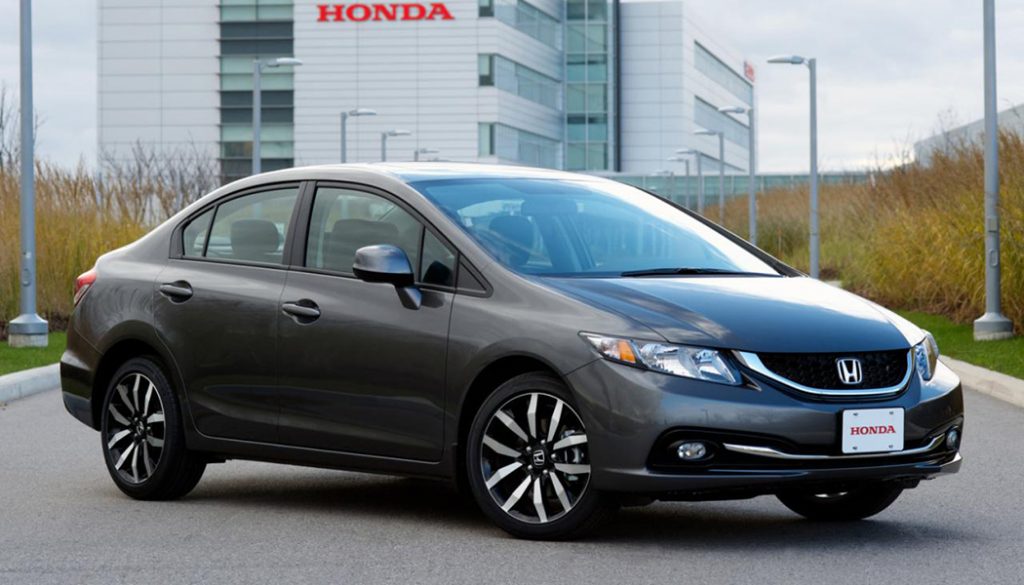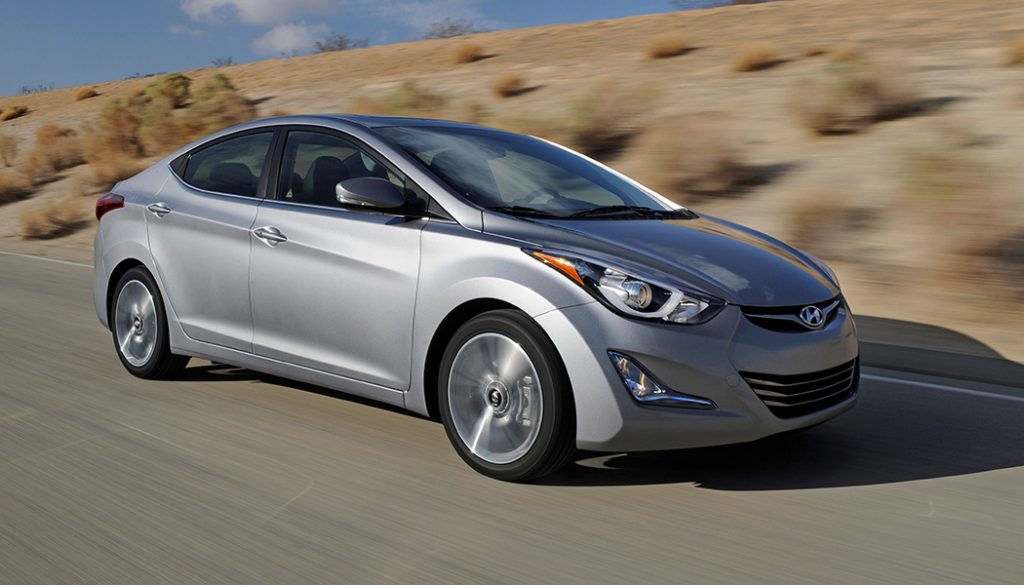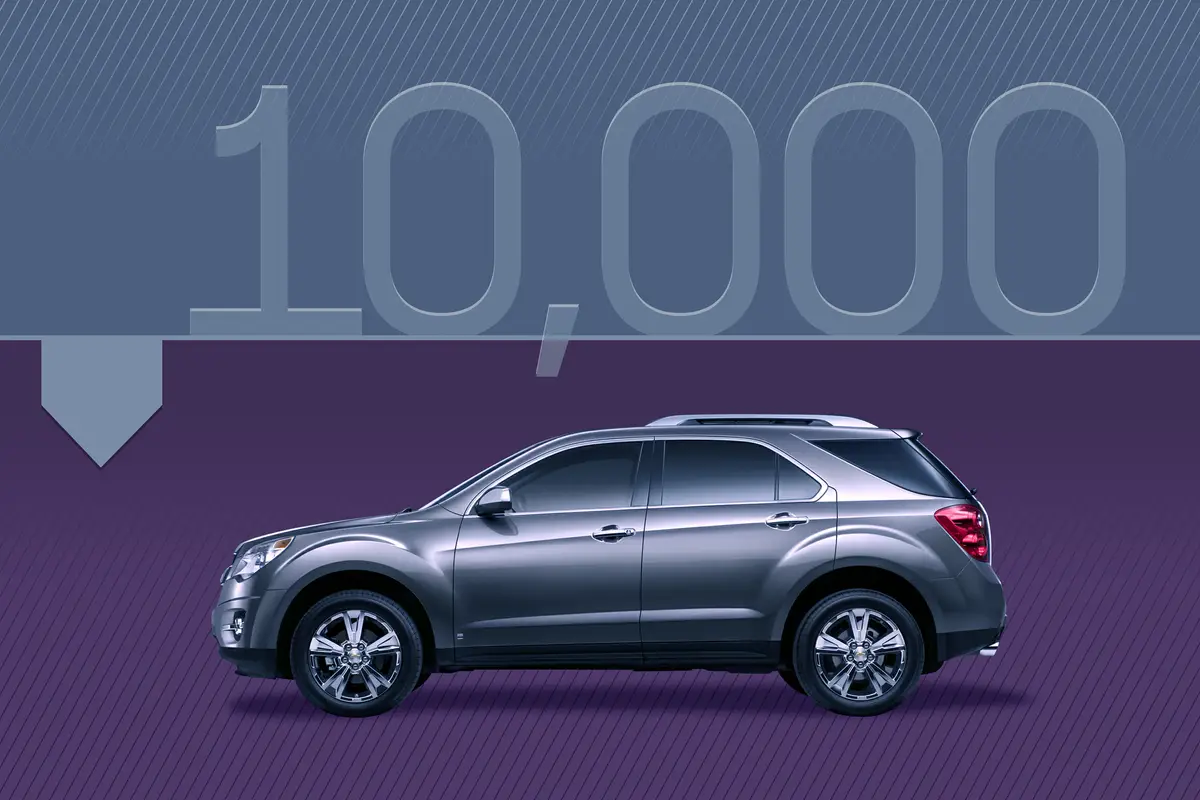Overview of Used Cars Under $10,000
The used car market below $10,000 presents a compelling opportunity for budget-conscious buyers seeking reliable transportation. This segment caters to a broad range of needs, from first-time car owners to those looking for a practical, economical second vehicle. The availability of various makes and models in this price range often reflects the diversity of automotive preferences and affordability.
This price point typically attracts vehicles from the mid-2000s to early 2010s. These cars are often well-maintained, but may show some wear and tear, and their features and technological sophistication might not match newer models. Crucially, thorough pre-purchase inspections are paramount when considering used vehicles in this category.
Typical Characteristics of Vehicles
Vehicles in this price range frequently demonstrate common characteristics, such as mileage, general condition, and the presence of pre-existing issues. Many are daily drivers with high mileage, but some well-maintained examples exist. A key factor to consider is the level of upkeep and maintenance the vehicle has received. Potential buyers should examine factors such as accident history, service records, and the overall condition of the interior and exterior.
Common Makes and Models
Several makes and models consistently appear in this segment due to their popularity, reliability, and affordability. These often include Honda Civics, Toyota Corollas, and Ford Focuses. Other frequently encountered options encompass models from Hyundai, Kia, and Mazda. The precise availability of specific models will vary by location and market conditions.
Comparison of Common Features
The following table highlights common features across various makes and models in the under-$10,000 used car market. It is important to note that this is a simplified representation, and variations exist within each make and model.
| Make | Model | Year | Engine |
|---|---|---|---|
| Honda | Civic | 2008 | 1.8L 4-cylinder |
| Toyota | Corolla | 2010 | 1.8L 4-cylinder |
| Ford | Focus | 2009 | 2.0L 4-cylinder |
| Hyundai | Elantra | 2012 | 1.8L 4-cylinder |
| Kia | Rio | 2011 | 1.6L 4-cylinder |
Factors Influencing Price
Used cars under $10,000 represent a diverse market segment, appealing to budget-conscious buyers seeking reliable transportation. Several key factors significantly influence the price of these vehicles, including mileage, condition, features, and the type of vehicle. Understanding these factors allows potential buyers to make informed decisions and find the best value for their money.
A multitude of variables contribute to the final price tag of a used car. These factors interact in complex ways, and careful consideration of each is crucial for a sound purchasing strategy. Price negotiations often hinge on the interplay between these factors, highlighting the importance of thorough research and realistic expectations.
Mileage Impact
Mileage is a crucial determinant of a used car’s price. Lower mileage typically translates to better condition and higher resale value. A car with minimal wear and tear from low usage commands a premium. This is reflected in the market, with vehicles exhibiting significantly lower mileage often commanding a higher price point.
Condition Assessment
Vehicle condition plays a pivotal role in pricing. A well-maintained car with minor wear and tear will command a higher price compared to a vehicle showing extensive signs of damage or neglect. Factors like paint condition, interior wear, and mechanical functionality are all assessed to determine the overall condition rating. A thorough inspection by a qualified mechanic is often advisable to ascertain the true condition of the vehicle.
Features and Vehicle Type
The presence of desirable features significantly impacts pricing. Features such as automatic transmissions, power options (power windows, power seats), and advanced safety features can all contribute to a higher price. Different vehicle types also influence pricing. Sedans often have a lower price point than SUVs or trucks due to their smaller size and lower manufacturing costs. However, demand and specific features can alter this relationship.
Impact of Automatic Transmission
The presence of an automatic transmission generally results in a higher price compared to a manual transmission. This is because automatic transmissions are often seen as more convenient and fuel-efficient, although this can vary based on the specific make, model, and year of the vehicle.
Mileage and Price Range Table
| Mileage | Price Range | Average Condition |
|---|---|---|
| <10,000 miles | $8,000-$9,000 | Excellent |
| 10,000-20,000 miles | $7,500-$8,500 | Very Good |
| 20,000-30,000 miles | $6,500-$7,500 | Good |
| 30,000-40,000 miles | $5,500-$6,500 | Fair |
Finding a Car Under $10,000

Locating a used vehicle within a specific budget requires a strategic approach. This section details effective methods for finding affordable used cars, encompassing online resources and crucial considerations during the purchase process. Understanding the factors influencing price, as discussed previously, is paramount to making informed decisions.
Finding a used car for under $10,000 often involves a combination of proactive searching and careful evaluation. The process involves navigating online platforms, inspecting potential vehicles thoroughly, and asking pertinent questions to ensure a positive purchase experience.
Online Resources for Used Cars
Numerous online platforms provide access to a vast selection of used cars. Online dealerships and classifieds offer convenient browsing and comparison tools. These resources often include detailed vehicle specifications, images, and contact information for sellers. Leveraging these platforms effectively allows for broader market exploration and potential cost savings.
Utilizing Online Dealerships
Many dealerships maintain online inventories, enabling prospective buyers to view listings from the comfort of their homes. This allows for comparison shopping and the ability to pre-qualify for financing, reducing the time and effort spent at dealerships. Using online dealership search tools with filters for price, make, model, and year allows for rapid narrowing down of potential options. For example, a buyer interested in a reliable compact sedan under $10,000 can easily filter listings to find suitable options within their budget.
Leveraging Online Classifieds
Online classifieds are another valuable resource for locating used cars. These platforms often feature listings from private sellers, potentially offering more competitive prices than dealerships. However, it’s essential to exercise caution and thoroughly verify the seller’s legitimacy and the vehicle’s condition before making any commitment. For example, a buyer may find a well-maintained, low-mileage vehicle listed at a significantly lower price than comparable options from dealerships.
Thorough Vehicle Inspections
A comprehensive vehicle inspection is crucial to assess the true condition of a potential purchase. This includes a visual inspection of the exterior and interior, checking for damage, rust, or wear. Furthermore, a mechanic’s inspection can reveal potential mechanical issues not readily apparent. The importance of a pre-purchase inspection cannot be overstated. This proactive step can prevent costly repairs down the road and help identify any potential hidden problems.
Crucial Questions to Ask
Asking the right questions during the purchase process is essential for informed decision-making. Key inquiries include the vehicle’s history, mileage, condition, and maintenance records.
- What is the vehicle’s history? A vehicle history report can provide details about previous accidents, damage, or ownership. Obtaining a report from a reputable source like Carfax or AutoCheck can help identify any potential red flags and inform your decision.
- What is the mileage? Mileage is a crucial indicator of a vehicle’s overall wear and tear. A high mileage on a vehicle in good condition might still be a great deal, but a low mileage on a damaged vehicle is a concern. Consider the vehicle’s age and intended use when evaluating mileage.
- What is the condition of the vehicle? A thorough inspection, including checking for any visible damage, rust, or wear, is vital. The condition of the interior and exterior should align with the advertised description and the asking price.
- What are the maintenance records? Reviewing maintenance records can provide insight into the vehicle’s past upkeep and identify potential future maintenance needs. Consistent maintenance can significantly impact the long-term reliability of the vehicle.
Common Issues and Problems
Finding a used car under $10,000 can be exciting, but it’s crucial to be aware of potential pitfalls. This price range often includes vehicles with varying levels of maintenance history, potentially leading to unforeseen problems. Thorough inspection and a realistic understanding of common issues are key to making a sound purchase decision.
Understanding the typical problems associated with used cars in this price range allows buyers to proactively address potential concerns and negotiate effectively. This knowledge empowers informed decision-making, minimizing the risk of costly repairs or safety hazards.
Typical Mechanical Issues
Mechanical problems are a frequent concern with used cars, particularly in the under-$10,000 range. These vehicles may have accumulated wear and tear over time, leading to issues with various components. Engines, transmissions, and electrical systems are particularly susceptible to problems. Inspecting these components thoroughly during the pre-purchase inspection process is essential. Examples of potential issues include worn-out spark plugs or faulty ignition coils in the engine, causing misfires or reduced power output. Transmission problems, such as slipping gears or noisy operation, are also common. Electrical problems, like faulty alternators or starting issues, can also occur and lead to costly repairs.
Potential Safety Concerns
Safety is paramount when purchasing a used car. A comprehensive safety inspection is crucial to identify potential hazards. Inspect for damage to the body, including signs of previous accidents, which could affect structural integrity and safety features. Pay attention to the condition of the tires, brakes, and steering components. Worn-out tires, for instance, significantly reduce stopping power and increase the risk of an accident. Ensure that all safety features, such as airbags, seatbelts, and anti-lock brakes, are in working order. This thorough assessment helps to identify potential safety risks and ensure the vehicle’s roadworthiness.
Summary of Common Problems by Vehicle Type
| Vehicle Type | Common Problem | Severity |
|---|---|---|
| Sedan | Transmission issues | Moderate |
| SUV | Suspension problems | Moderate |
| Truck | Engine leaks | Moderate to High |
| Hatchback | Electrical issues | Moderate |
| Minivan | Interior wear and tear | Low |
Maintaining a Used Car Under $10,000

Owning a used car under $10,000 presents a unique set of maintenance challenges and opportunities. Budget constraints often necessitate a proactive approach to upkeep, focusing on preventative measures and cost-effective solutions. Understanding the potential pitfalls and implementing smart maintenance strategies can significantly extend the life and reliability of your vehicle.
Maintaining a vehicle in this price range requires a balance between budget-friendliness and preventative care. Routine maintenance is crucial to prevent costly repairs down the road. By addressing potential problems early, you can avoid more significant and expensive issues later.
Routine Maintenance Strategies
Regular maintenance is essential for any vehicle, regardless of price. This includes tasks like oil changes, tire rotations, and filter replacements. Consistent upkeep helps to prevent minor issues from escalating into major problems. Ignoring these tasks can lead to premature wear and tear, resulting in higher repair costs in the long run.
Cost of Routine Maintenance and Repairs
The cost of routine maintenance varies based on the specific make and model of the vehicle. Oil changes, for instance, typically range from $30 to $80. Tire rotations and filter replacements usually cost less than $50. However, repairs can be more substantial. For example, a faulty alternator could cost several hundred dollars to replace. Thorough research and comparison shopping can help to keep costs in check.
Preventative Maintenance Tips
Proactive measures are key to extending the life of your used vehicle. Regularly checking fluid levels, inspecting hoses and belts, and monitoring tire pressure are essential preventative steps. These checks can identify potential problems before they cause major damage, saving you significant money in the long run.
Cost-Effective Repair Options
Finding cost-effective solutions for repairs is crucial when working with a limited budget.
DIY Maintenance
Performing some maintenance tasks yourself can significantly reduce repair costs. Tasks like changing oil, air filters, and wiper blades can be learned and performed at home. Numerous online resources and guides provide step-by-step instructions to assist in DIY maintenance.
Finding Reputable Mechanics
Locating a trustworthy and reasonably priced mechanic is important. Ask for recommendations from friends, family, or online forums. Researching mechanics’ reputations and comparing quotes from several shops can help you make an informed decision. A good mechanic will be able to diagnose the issue accurately and provide transparent cost estimates. They should also be able to explain the necessary repairs in a clear and understandable way. A reputable mechanic should prioritize quality repairs over quick fixes.
Descriptive Illustrations

Finding the right used car under $10,000 requires careful consideration of condition, maintenance history, and potential issues. Visual representations can significantly aid in the decision-making process, helping buyers assess the true value and risks involved. These illustrations provide a concrete understanding of what to expect when considering a used vehicle within this price range.
A Meticulously Maintained Used Car
A well-maintained used car under $10,000 often presents a clean, well-organized interior. The dashboard and center console are free of cracks, tears, or excessive wear. The seats show minimal signs of use, and the carpets are in excellent condition, free of stains or rips. Exterior paint is in good condition, with no significant scratches, dents, or rust. The tires show even tread wear and are in good shape. The overall impression is of a car that has been cared for and maintained diligently, suggesting a history of responsible ownership. This car likely comes with a comprehensive maintenance record, further supporting its reliable condition.
A Used Car with Significant Mechanical Issues
A vehicle with significant mechanical issues will exhibit noticeable signs of neglect or wear. The exterior might show rust or dents in certain areas, indicating potential previous accidents or neglect. The interior could display worn-out upholstery, stains, or tears, potentially reflecting a lack of care. The engine may sound rough or exhibit unusual noises, such as knocking or rattling. The vehicle may have difficulty starting or accelerating smoothly, indicating a possible electrical or fuel system problem. Leaks, especially under the vehicle, suggest potential fluid issues. A thorough inspection is critical in such cases to determine the extent of the repairs needed.
Comparison of Two Similar Used Cars
Comparing two similar vehicles with different conditions highlights the importance of careful inspection. Consider two sedans with the same model year, make, and mileage. Vehicle A exhibits a clean exterior, shows no signs of significant accidents, and has a well-maintained interior. Vehicle B displays a few minor dents and scratches on the exterior and shows some signs of wear inside. The pricing difference between the two, even with similar features, could reflect the significant differences in maintenance history and overall condition. In this example, the difference in pricing likely reflects the need for additional repairs on Vehicle B, outweighing the advantages of a similar model year and mileage.
Importance of Thorough Pre-purchase Inspections
Thorough pre-purchase inspections are essential to avoid costly surprises after the purchase. A detailed inspection should include a visual examination of the exterior, interior, and mechanical components. The exterior should be checked for any damage, dents, rust, or paint imperfections. The interior should be assessed for wear and tear on the upholstery, carpets, and dashboard. The engine should be inspected for leaks, unusual noises, and overall functionality. The undercarriage should be checked for rust, leaks, and damage to the suspension components. A detailed visual guide of these areas will greatly aid in a thorough inspection.

A visual guide, such as a diagram, could clearly depict the various areas to examine during a pre-purchase inspection. The diagram should highlight specific points to look for, including undercarriage inspection, tire tread depth, and engine compartment examination. This would facilitate a structured inspection, reducing the risk of overlooking critical details.